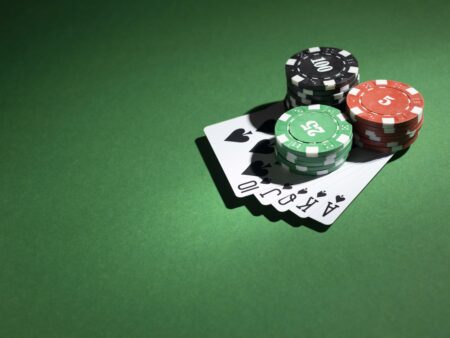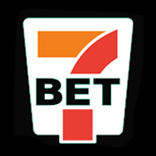Are you interested in learning how to play poker? Poker is a popular card game that combines skill, strategy, and a bit of luck. Whether you’re a complete beginner or someone looking to improve their poker game, this article will provide you with a comprehensive guide on how to play poker. We’ll cover the basics of the game, including poker cards, poker combinations, and poker rankings. So, let’s dive in!
Introduction to Poker
Poker is a card game that has been enjoyed by millions of people around the world for many years. It offers excitement, competition, and the opportunity to win real money. Whether you play at home with friends or in a casino, understanding the basics of poker is essential. In this guide, we will cover the fundamental aspects of the game, including the rules, hand rankings, and strategies to help you become a successful poker player.
2. Poker Cards
Before diving into the gameplay, let’s familiarize ourselves with the deck of cards used in poker. A standard deck consists of 52 cards, divided into four suits: hearts, diamonds, clubs, and spades. Each suit contains 13 cards: Ace, 2, 3, 4, 5, 6, 7, 8, 9, 10, Jack, Queen, and King. These cards are ranked in ascending order, with the Ace being the highest-ranking card.
3. Poker Combinations
To play poker effectively, it’s crucial to understand the different combinations of cards that can be formed. The following are the key poker combinations:
- Royal Flush: A Royal Flush is the highest-ranking hand in poker and consists of Ace, King, Queen, Jack, and Ten, all in the same suit. It is an extremely rare and powerful hand.
- Straight Flush: A Straight Flush is the sequence of five cards in numerical order, all in the same suit. For example, 4, 5, 6, 7, and 8 of hearts.
- Four of a Kind: Four of a Kind consists of four cards of the same rank, accompanied by any fifth card. For instance, four Aces with any other card
- Full House: A Full House is a combination of three cards of the same rank and two cards of another rank. It is also known as a “boat.” An example is three Kings and two Queens.
- Flush: A Flush consists of any five cards of the same suit, not in numerical order. All cards in a flush must belong to the same suit. For instance, five diamonds of any rank.
- Straight: A Straight is a sequence of five cards in numerical order, but not all in the same suit. An example is 5 of spades, 6 of hearts, 7 of diamonds, 8 of clubs, and 9 of hearts.
- Three of a Kind: Three of a Kind consists of three cards of the same rank, accompanied by two unrelated cards. For example, three Jacks with any other two cards.
- Two Pair: Two Pair includes two cards of the same rank, another two cards of the same rank, and any fifth card. An example is two Kings, two Tens, and a random card.
- One Pair: One Pair consists of two cards of the same rank, accompanied by three unrelated cards. For instance, two Queens with any other three cards.
- High Card: If no player has any of the above combinations, the player with the highest card wins. The highest-ranking card in this case is the Ace, followed by King, Queen, and so on.
4. Poker Rankings
Understanding the poker rankings is crucial for determining the strength of your hand. Here is the ranking order, from highest to lowest:
- Royal Flush
- Straight Flush
- Four of a Kind
- Full House
- Flush
- Straight
- Three of a Kind
- Two Pair
- One Pair
- High Card
Knowing the rankings will help you make informed decisions during gameplay and assess the value of your hand relative to other players.
5. How to Play Poker: Step-by-Step Guide
Now that you have a basic understanding of the cards and combinations, let’s dive into the step-by-step guide on how to play poker. Here is a simplified version of the gameplay:
Step 1: The dealer shuffles the deck and deals each player two private cards, also known as “hole cards.”
Step 2: The first round of betting begins with the player to the left of the dealer. Each player has the option to fold, call, or raise.
Step 3: After the initial betting round, the dealer places three community cards face-up on the table. This is called the “flop.”
Step 4: Another round of betting takes place, starting with the player to the left of the dealer. Step 5: The dealer reveals the fourth community card, known as the “turn.”
Step 6: Another betting round follows the turn.
Step 7: Finally, the dealer reveals the fifth and final community card, known as the “river.”
Step 8: The last round of betting takes place.
Step 9: If more than one player remains after the final betting round, a showdown occurs. Players reveal their hole cards, and the player with the best hand wins the pot.
It’s important to note that poker has various variants, such as Texas Hold’em, Omaha, and Seven-Card Stud. Each variant has its own specific rules and gameplay, but the basic concepts remain the same.
6. Understanding Poker Strategies
Poker is not just a game of luck; it also requires strategic thinking and decision-making. Here are a few fundamental strategies to consider:
- Starting Hand Selection: Choose your starting hands wisely based on their potential to form strong combinations.
- Position: Take advantage of your position at the table by observing other players’ actions before making your move.
- Bluffing: Use strategic bluffing to deceive your opponents and make them fold better hands.
- Reading Opponents: Pay attention to your opponents’ betting patterns, body language, and reactions to gain insights into their hands.
- Bankroll Management: Manage your bankroll wisely to avoid unnecessary losses and ensure long-term profitability.
7. Tips for Successful Poker Gameplay
To enhance your poker skills and increase your chances of winning, consider the following tips:
- Practice regularly to improve your understanding of the game and develop your skills.
- Observe and learn from experienced players to gain insights into advanced strategies.
- Manage your emotions and avoid making impulsive decisions based on frustration or excitement.
- Continuously analyze your gameplay and identify areas for improvement.
- Stay disciplined and stick to your strategy, even during challenging moments.
Remember, becoming a successful poker player takes time, patience, and dedication. Embrace the learning process and enjoy the journey.
8. Common Poker Terms
To fully immerse yourself in the world of poker, it’s essential to understand common poker terms. Here are a few frequently used terms:
- Blinds: Forced bets placed by two players before the start of a hand.
- Check: Choosing not to bet when it’s your turn, passing the action to the next player.
- Raise: Increasing the bet amount during a betting round.
- Fold: Discarding your hand and forfeiting any further involvement in the current hand.
- All-In: Betting all of your chips or money on a single hand.
- Pot: The total amount of money or chips at stake in a hand.
- Showdown: The final stage of a hand where the remaining players reveal their cards to determine the winner.
Understanding these terms will allow you to communicate effectively with other poker players and participate confidently in the game.















